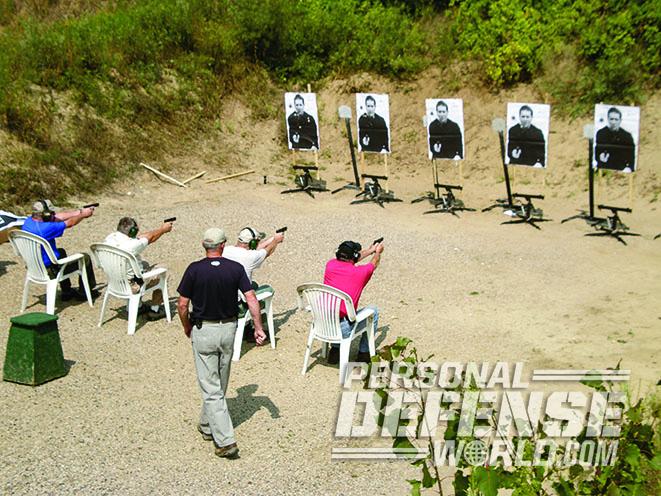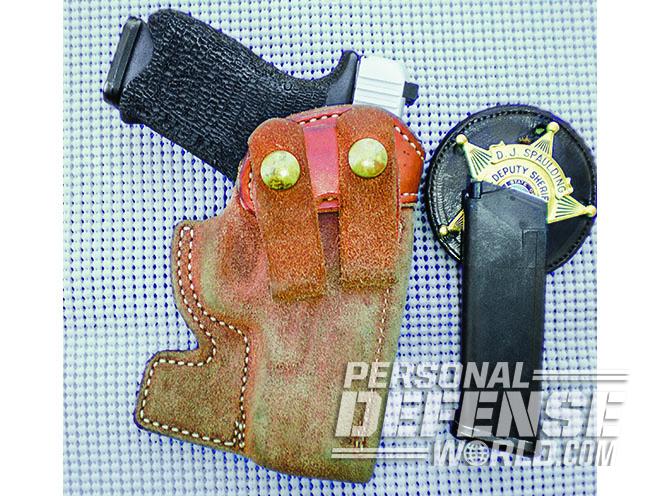Concealed carry is the act of carrying a concealed firearm and all that comes with it. Lieutenant Colonel Jeff Cooper had it right. “You are no more a gunman because you have a gun than you are a musician because you have a piano.” The biggest handgun with the most expensive holster and greatest +P+, thermonuclear, gold-tipped, XYZ or ABC, death-dealing hollow-point ammunition will be of no use if you cannot bring the gun into action and shoot well enough to save your life.
Although some try to make gunfighting sound magical, those of us who have spent our lives preparing for such situations have a pretty good idea of what will happen. We have studied the subject, read all we can, spoken to everyone possible who has been in a fight and spent too much time watching gunfight videos. And you know what? There is no average gunfight. Each event, though similar to others, will be its own situation. It’s impossible to try to prepare for everything that could happen in a fight. So we must look at the subject in general and prepare accordingly, understanding that we will have to tweak our tactics as a situation unfolds.
Fighting Back
Advertisement — Continue Reading Below

The biggest impediment to prevailing in any fight is not our ability to shoot well. It’s our willingness to stand up and fight. When we do, we must be able to make instant decisions in a crisis without suffering brain lock. And let me tell you: It’s easier said than done. We have heard the phrase “shoot, move and communicate,” but it’s actually more involved than that. Other considerations include recognizing threats, making instant decisions, keeping cool under extreme pressure, being concerned about non-hostiles, keeping track of a changing situation and more.
- RELATED STORY: Concealed Carry Guns – Top 10 Pistols & Revolvers For Backup
The harsh reality is that, if your shooting skills and fighting tactics are not on autopilot, you will not be able to focus on what’s unfolding around or in front of you. Obtain solid training and then practice. A good training course does not have to be a high-speed, low-drag course. Actually, what a special operations team might do is probably unrelated to your personal defense. What you need is a solid base of fundamental skills from which to draw.
I believe the Gunsite 250 class, Cooper’s original defensive pistol course, is the standard. Every shooting school across the country has such a program, and it will teach you how to run your gun and then apply those skills to personal defense, including decision-making skills. Learning to shoot is not enough. After you have a solid base of information, practice regularly. Several bouts of dry-fire practice per week is much better than intermittently firing a large volume of ammo.
Advertisement — Continue Reading Below
Guns & Gear

What do you need to know and practice for personal defense and concealed carry? First, you must select the right carry gear for your lifestyle and needs. I would caution against carrying a small mouse gun that might be easy to carry and conceal but is worthless in a fight. Yes, the first rule of gunfighting is to have a gun, but it should be powerful enough to handle the problem. Any gun is better than open hands, as using open hands against an attacker is never as appealing as it might seem.
- RELATED STORY: 22 Discreet Concealed Carry Holsters For All-Day Comfort
It’s more likely that, if you draw a gun against multiple adversaries, they’ll back off because they’re concerned about getting shot. In that situation, do you want to be holding a cute little .25 that’s easy to carry, or do you want a larger gun that will handle the problem if an attack occurs? The caliber should be .38 Special or 9mm, because in my experience, people shot with calibers less than those are not incapacitated. With larger calibers, they take greater notice. Even so, you should carefully select ammunition in .38 Special or 9mm. And the larger the bullet, the less ammo selection is important.
Advertisement — Continue Reading Below
Like what you’re reading? Check out the rest of this article in ‘Concealed Carry Handguns’ 2017. For information on how to subscribe, please email subscriptions@




























